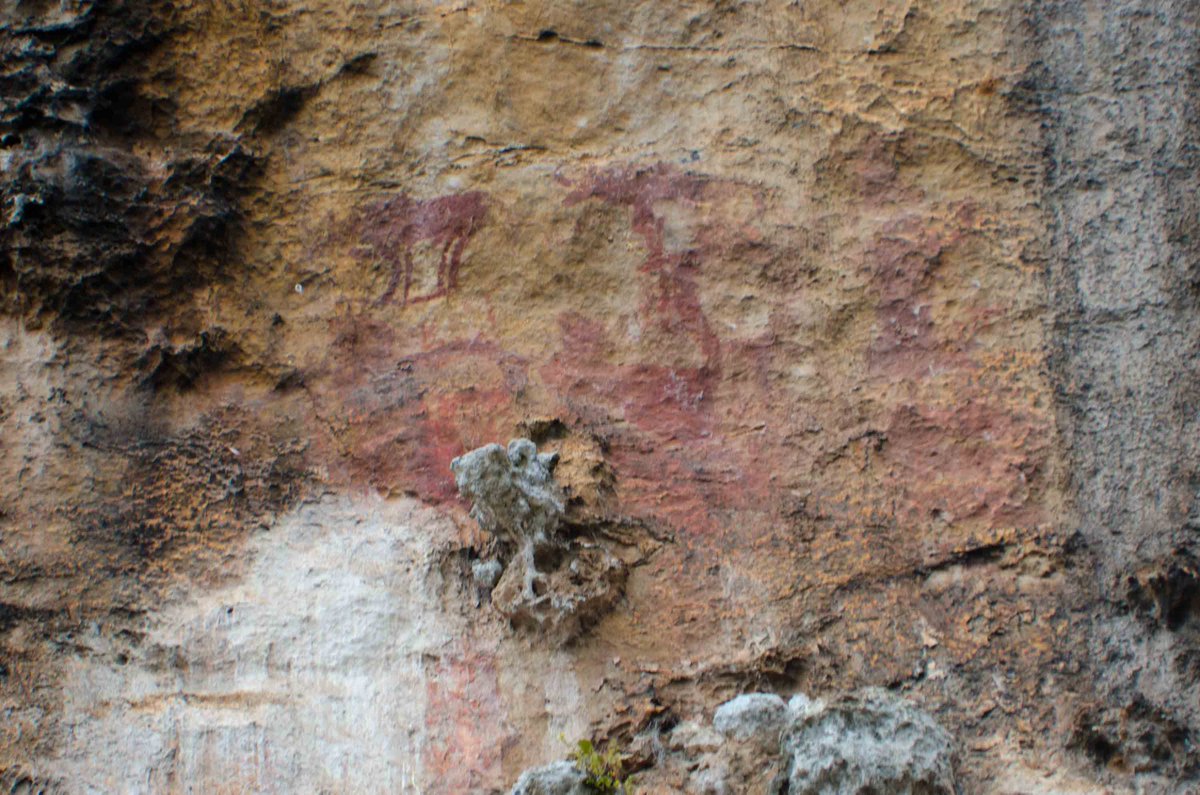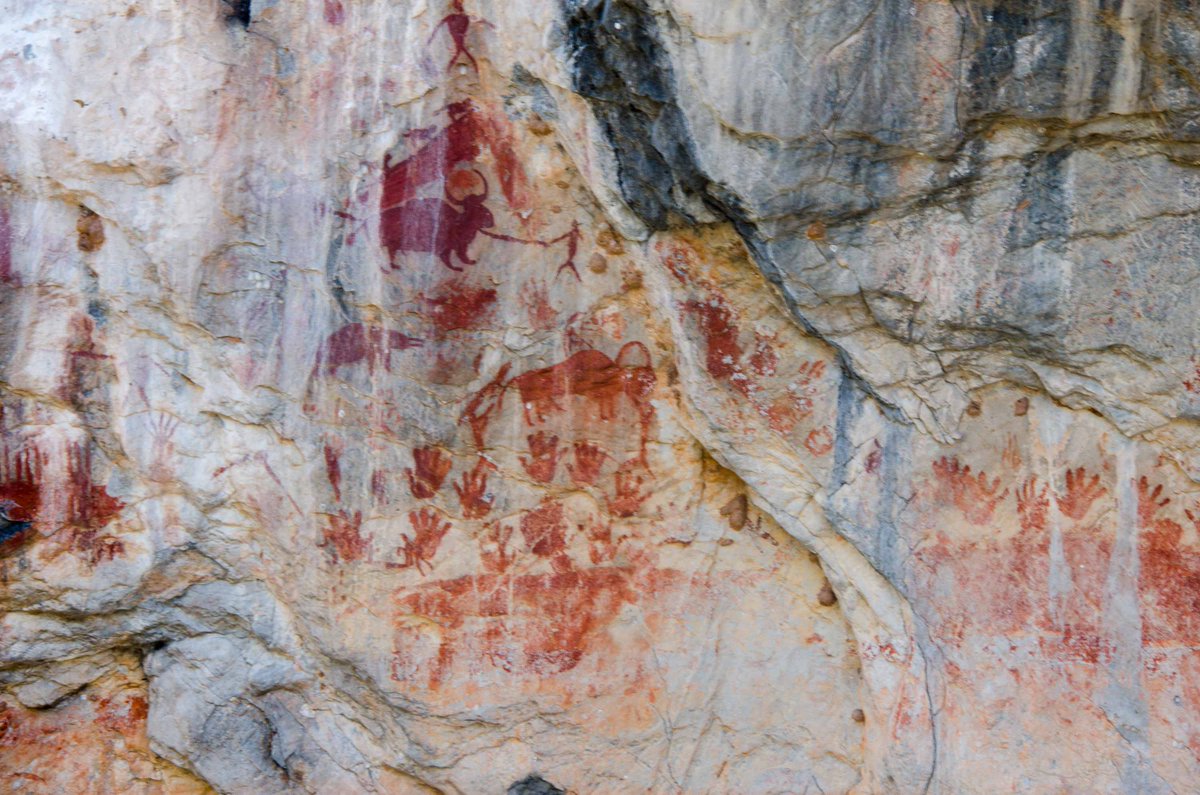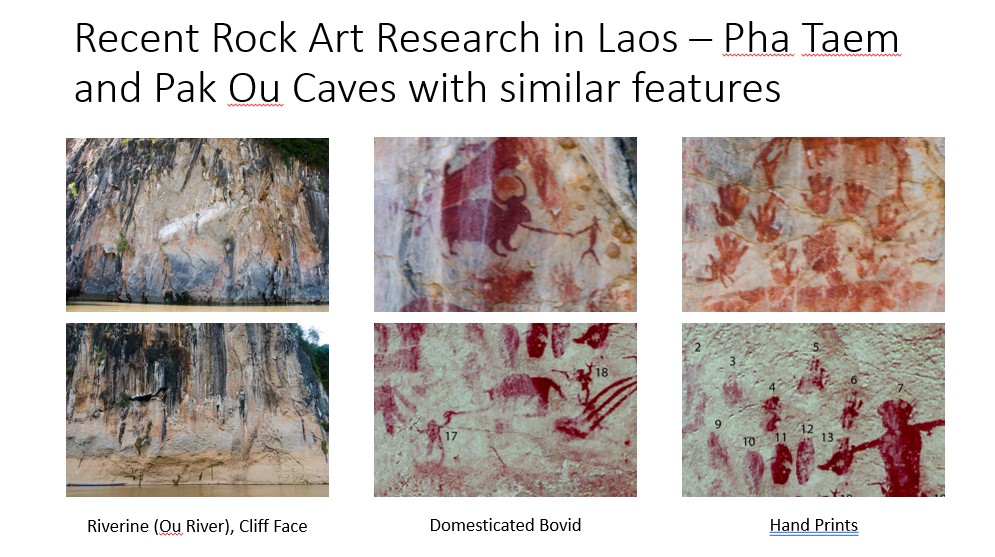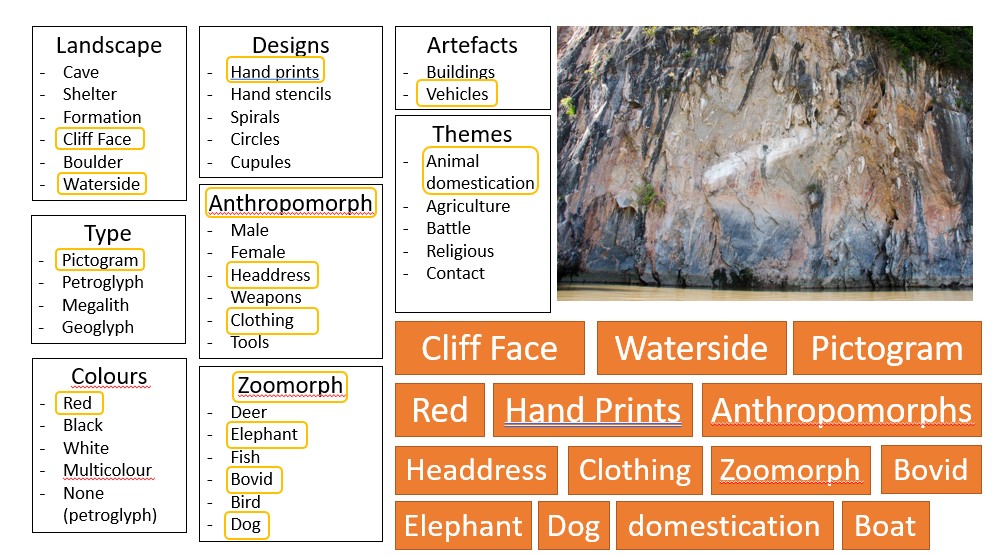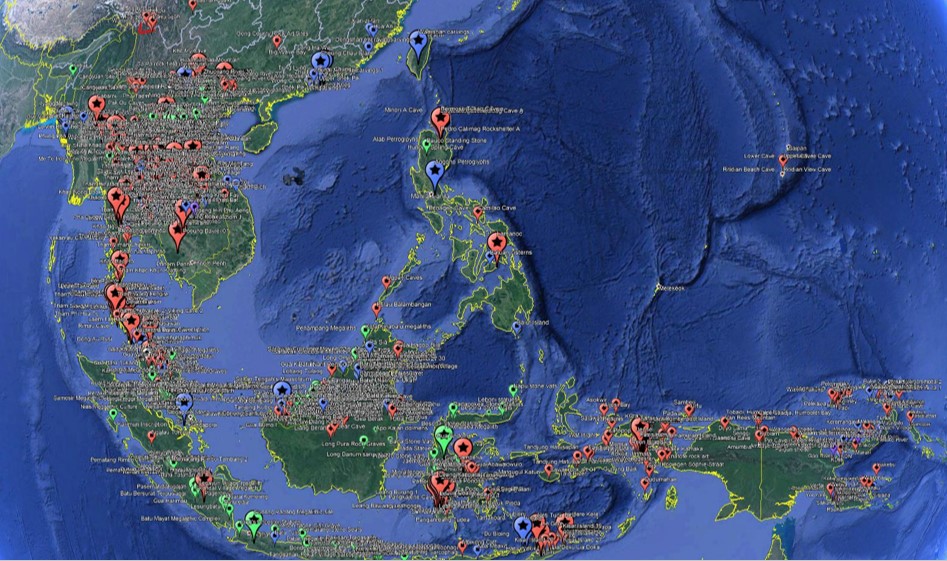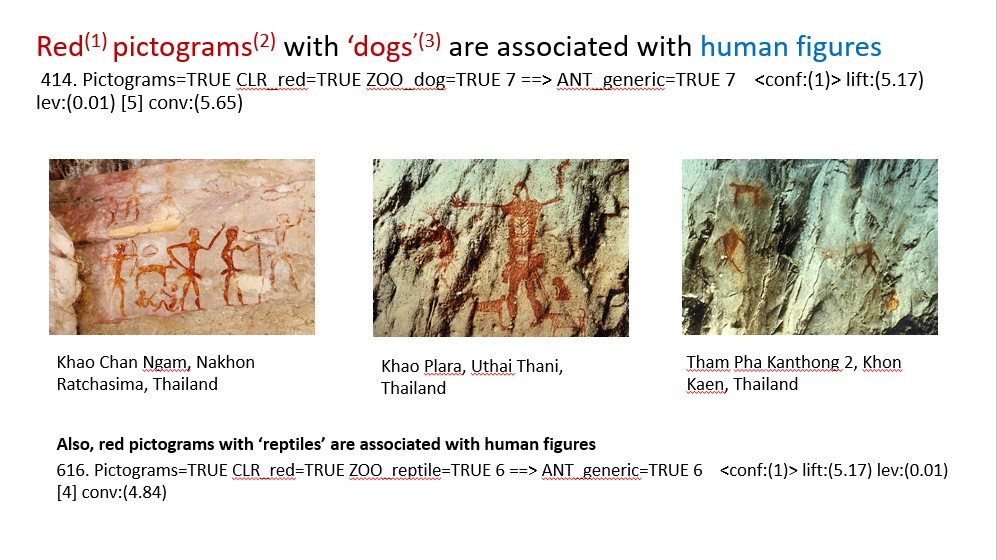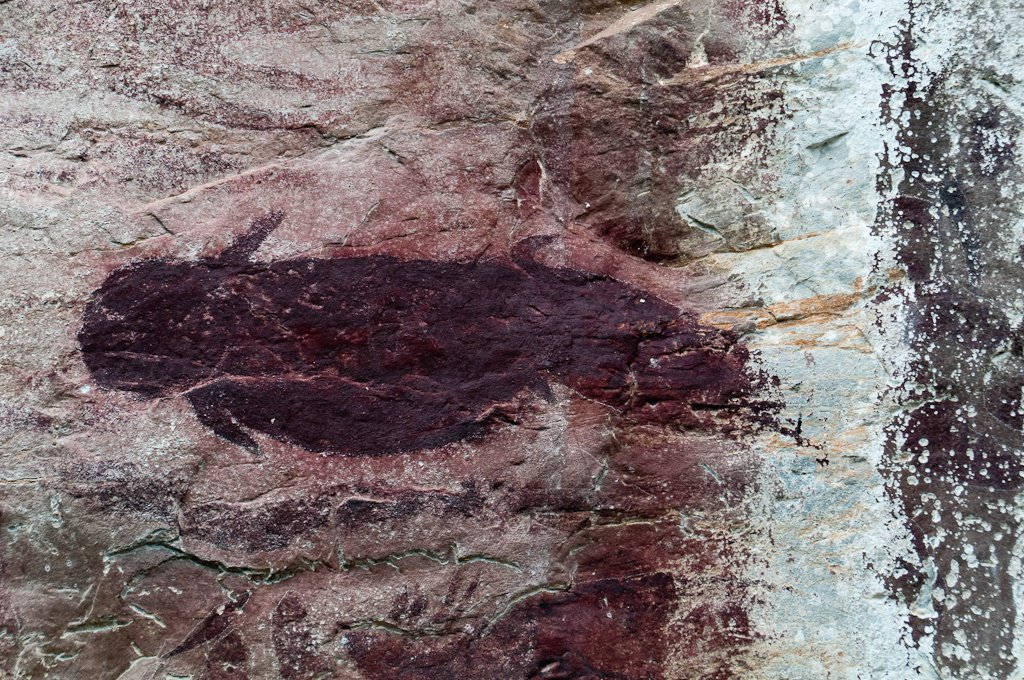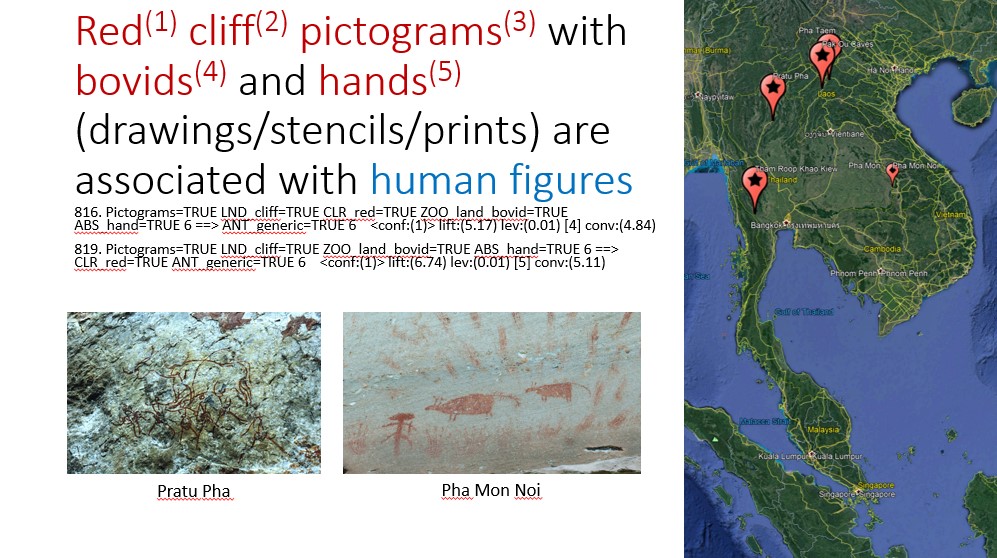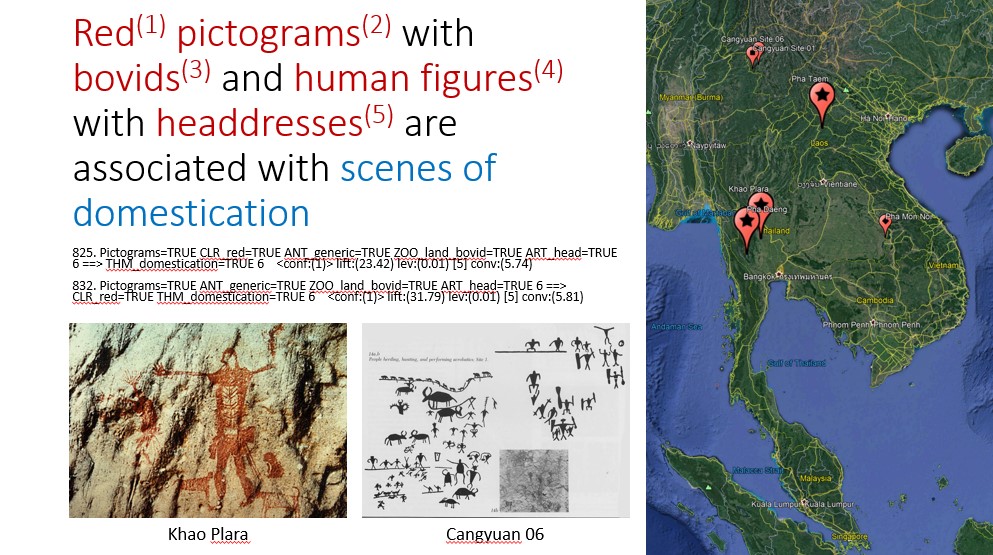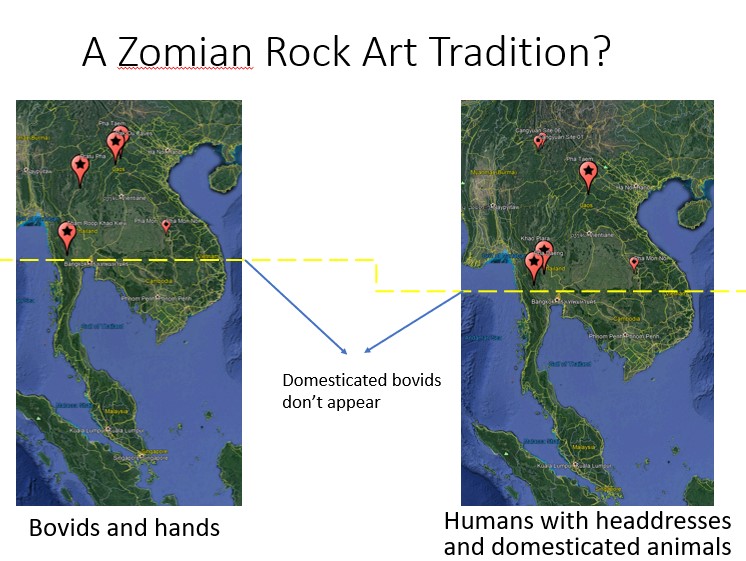1/18 The last couple of days I've been talking about current issues in SEA archaeology, and today I'm going to circle back to a rock art research work in progress with animal paintings, big data, and people in funny hats. I'm Noel from @seaarch, and this is my final thread
2/18 This research starts in Luang Prabang, Laos: as part of my PhD research I documented the rock art at the Pak Ou Caves, at the junction of the Mekong and Ou Rivers. The green steamship that I posted at the start of the week was from this site.
https://doi.org/10.1016/j.ara.2018.01.001
https://doi.org/10.1016/j.ara.2018.01.001
3/18 A few years later, I returned to Laos to document another site, Pha Taem, located about 80 km up the Ou River.
https://trove.nla.gov.au/work/232553635
https://trove.nla.gov.au/work/232553635
4/18 Both sites are remarkably similar: they have red paintings on the cliffside overlooking the river with similar motifs such as hand prints and domesticated bovids.
5/18 Here are a couple of short videos to give you a better idea of what the sites look like. Worth a look!
https://www.facebook.com/watch/?v=1932316316836848
Side note: the best part about being an archaeologist is that sometimes your office looks like this:
https://www.facebook.com/watch/?v=1932316316836848
Side note: the best part about being an archaeologist is that sometimes your office looks like this:
6/18 So I have two sites on the same river with similar motifs. I am pretty sure they are culturally linked, but in the absence of other physical evidence, would it be possible to construct a criteria for identifying similar sites, or maybe even predicting where they may appear?
7/18 To start with, you would need to take each site and break them down to distinct characteristics and categories that can be used across the dataset.
8/18 And of course, didn't I mention before that I had a list of over 1,500 sites across the region? Hence, a very large dataset.
9/18 This data could be mined to see what kind of attributes are associated with others. This is sometimes known as market basket analysis. It's how supermarkets develop promotions based on what you buy, and how YouTube figures out what shows to suggest to you.
10/18 Looking at a limited dataset of ~445 rock painting and carving sites in Mainland Southeast Asia (including sites in southern China and Hong Kong, some interesting associations start to appear. Eg. sites with red paintings of 'dogs' and 'reptiles' are associated with humans
11/18 Caveat: identifying 'dogs' and 'reptiles' always involves some sort of interpretation. Remember the impossible dugong of Gua Tambun!
12/18 The associations with the strongest correlations are are the most intruiging: (1)red (2)cliff (3)paintings of (4)bovids and (5)hands are associated with human figures
13/18 Another strong association is that (1)red (2)paintings of (3)bovids with (4)humans wearing (5)headdresses are associated with scenes of animal domestication
14/18 These two clusters of sites are located in Zomian (highland) Southeast Asia and also point out another intruiging pattern: there are no depictions of domesticated bovid outside of the highlands!
Is this suggestive of a Zomian rock art style?
Is this suggestive of a Zomian rock art style?
15/18 It is interesting that the Tai-speaking peoples of the highlands of Mainland Southeast Asia refer to an ancestor king who came from the north bringing the divine gifts of the buffalo and rice agriculture. And yes, the Lao sites from the start belong to this Zomian style.
16/18 I'm still refining the model, and also inputting the dataset so that the results will be more robust, but at least the initial associations are most interesting. This is a work in progress and it will take a while before I can publish any results. Akan datang.
17/18 And that's the end of my thread. I hope you learned something about rock art and Southeast Asian Archaeology - I have barely scratched the surface! For starters, shoutout to colleagues @SharonW42919634 @ingatkatandaan @alisonincambo @JoSankhaprasit @vn_archaeology
18/18 If you want to follow on news about Southeast Asian Archaeology, follow me at @seaarch
Thank You • Orkun Ch'raan • Korp Khun Mak • Korp Jai Lai Lai • Terima Kasih • Salamat Po' • Cam 'Un • Chezu Tinbate • Obrigado Barak • Xie Xie
Thank You • Orkun Ch'raan • Korp Khun Mak • Korp Jai Lai Lai • Terima Kasih • Salamat Po' • Cam 'Un • Chezu Tinbate • Obrigado Barak • Xie Xie
19/18 Because I ran out of space, other SEAsianists to follow: @IndoMedieval @Disperscapes @iseaarchaeology @ISEAS_THRC @Walking_Skelly @Nick_Skopal @nasha99 @KosalNgov @bealferreras @MikeGeoarch @aj_zach @beccainhkinlon1 @SuSaMiGroup @HeritageWatchKH (sorry if I missed you!)

 Read on Twitter
Read on Twitter